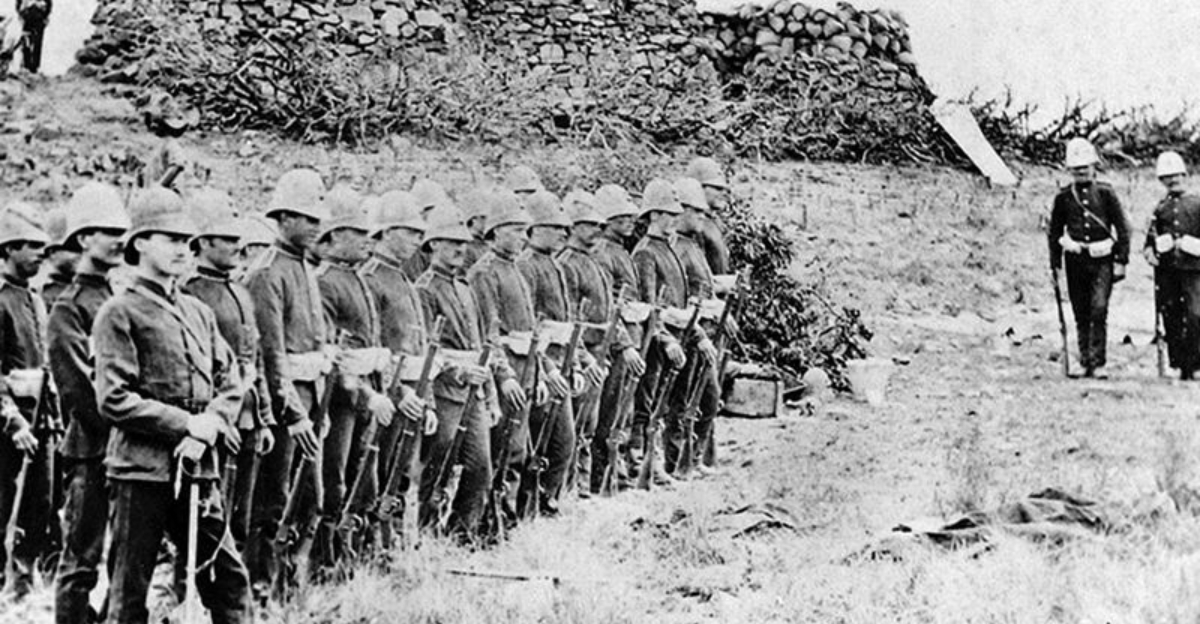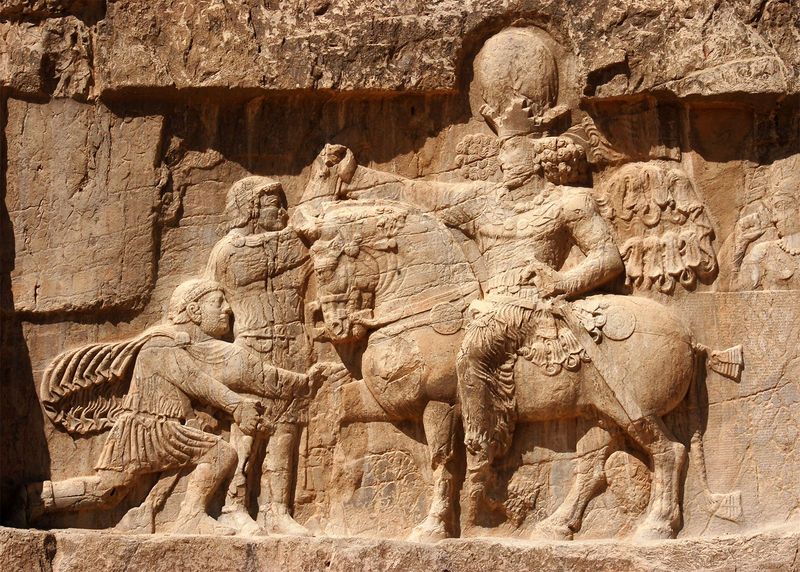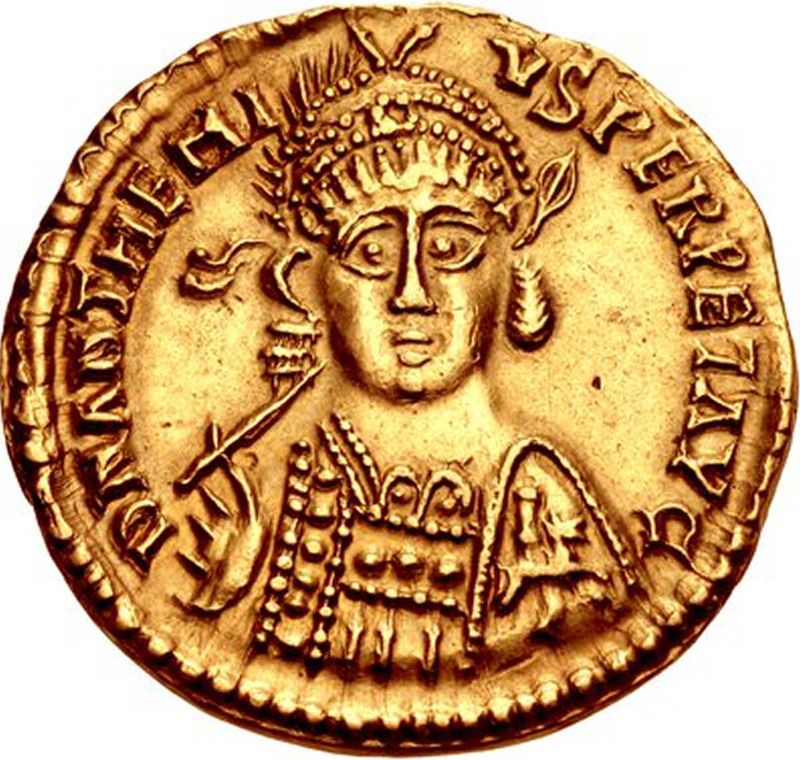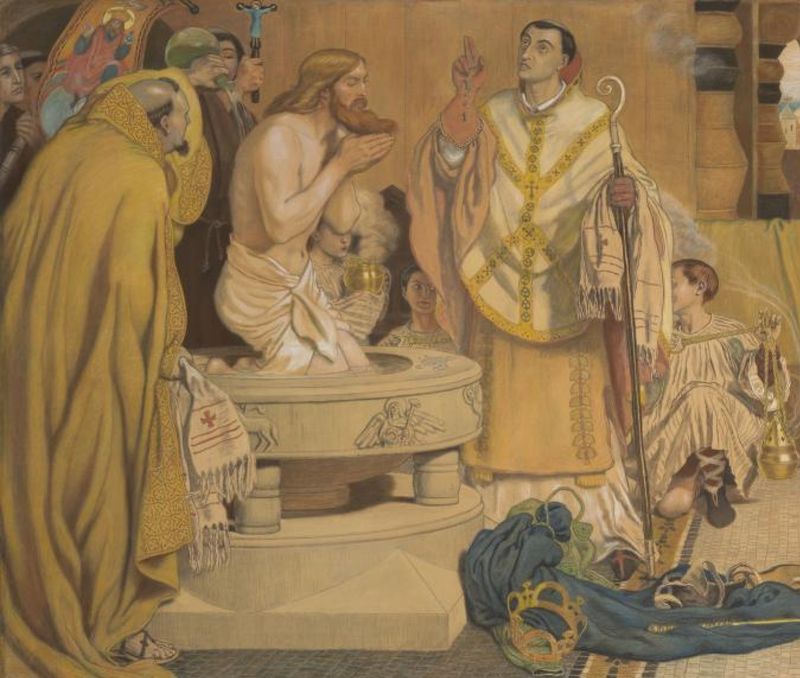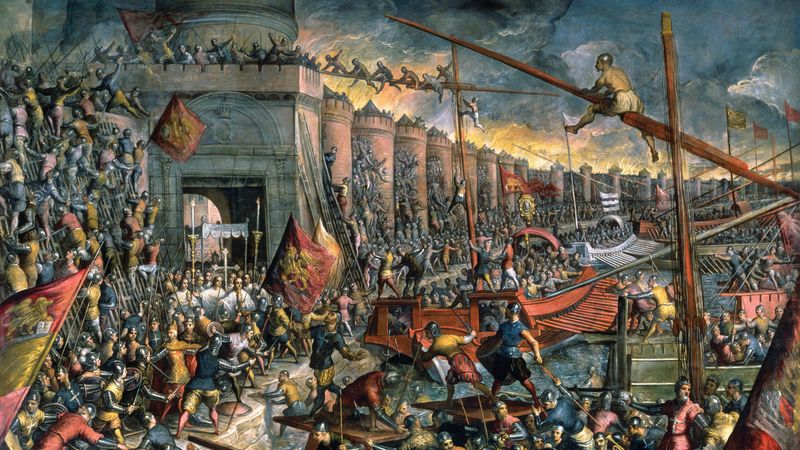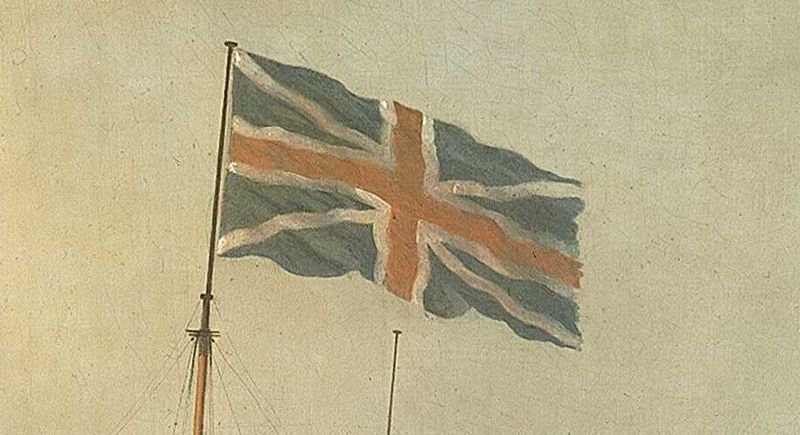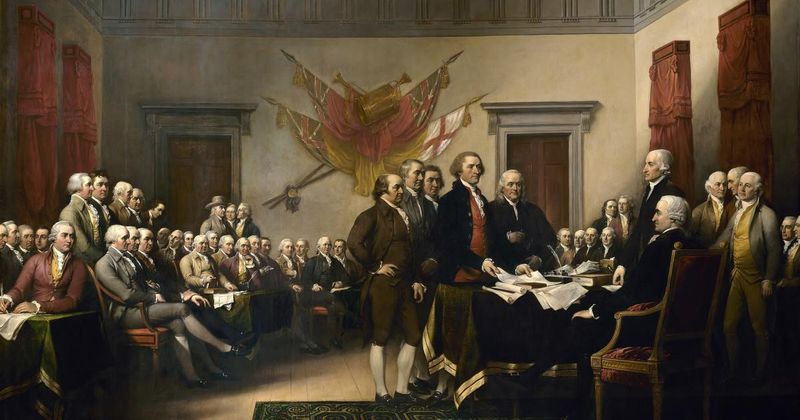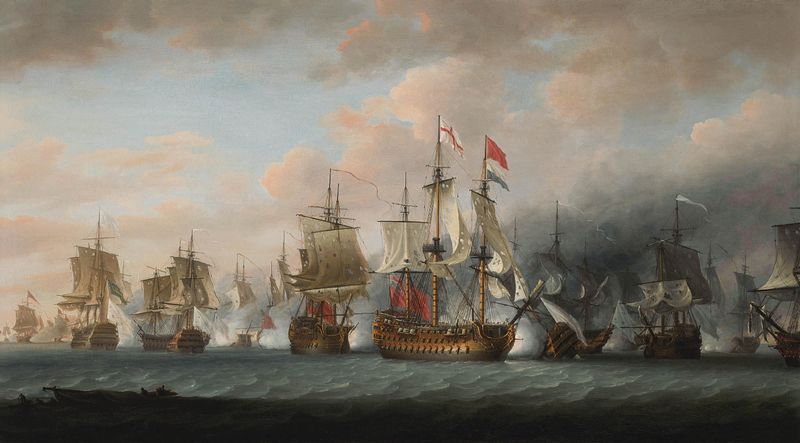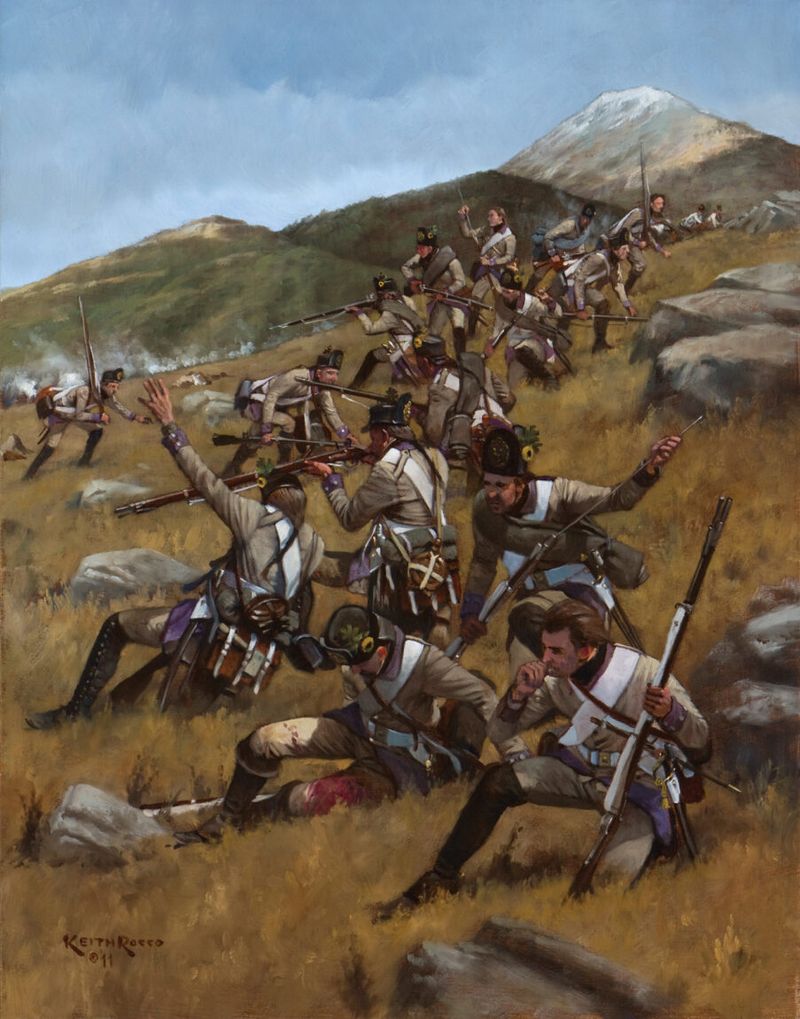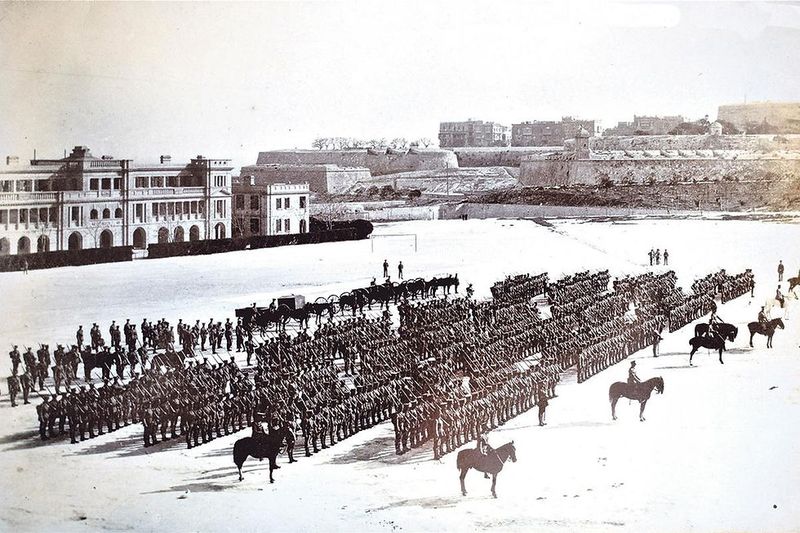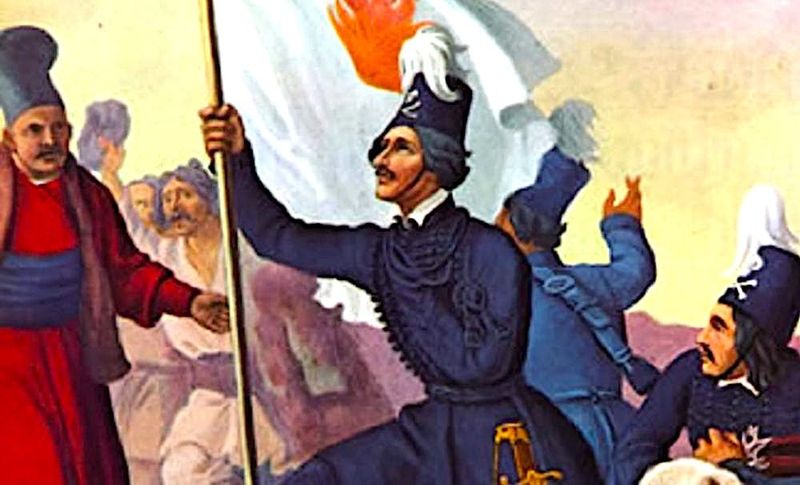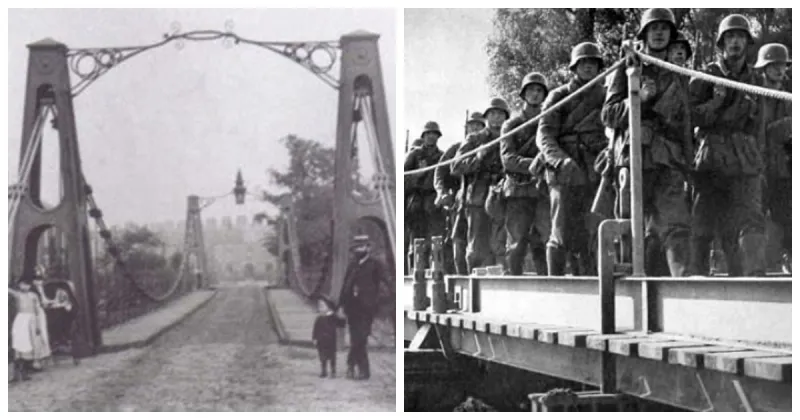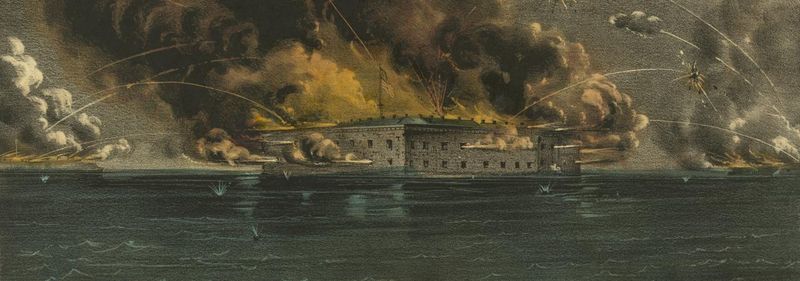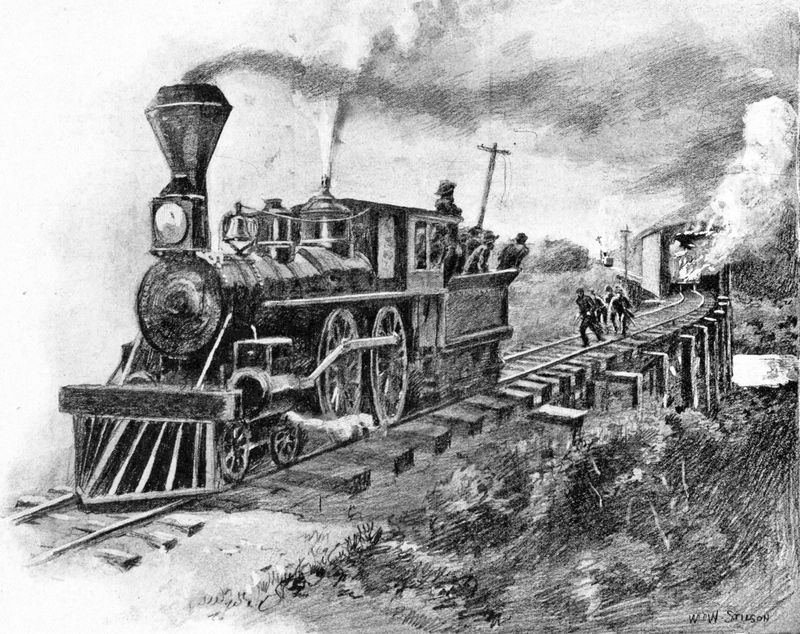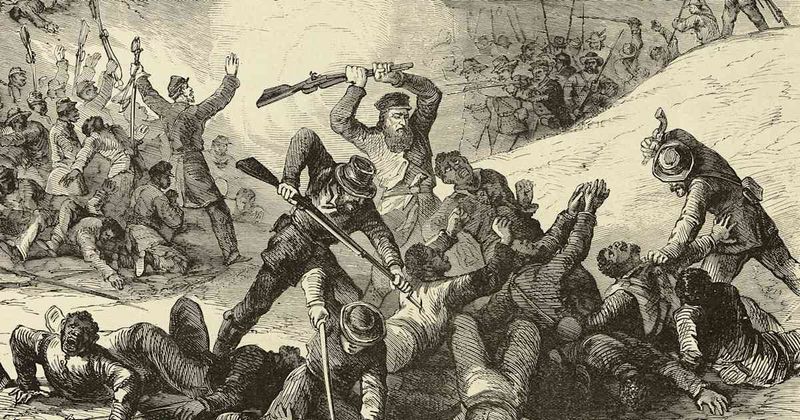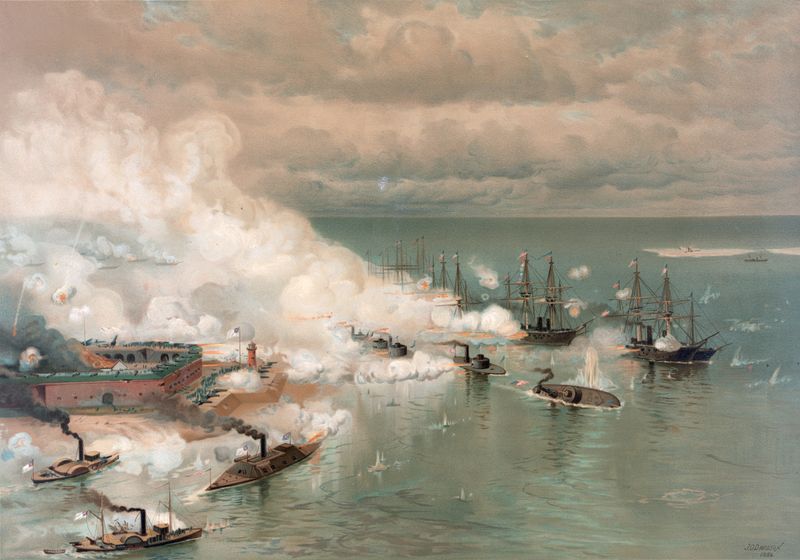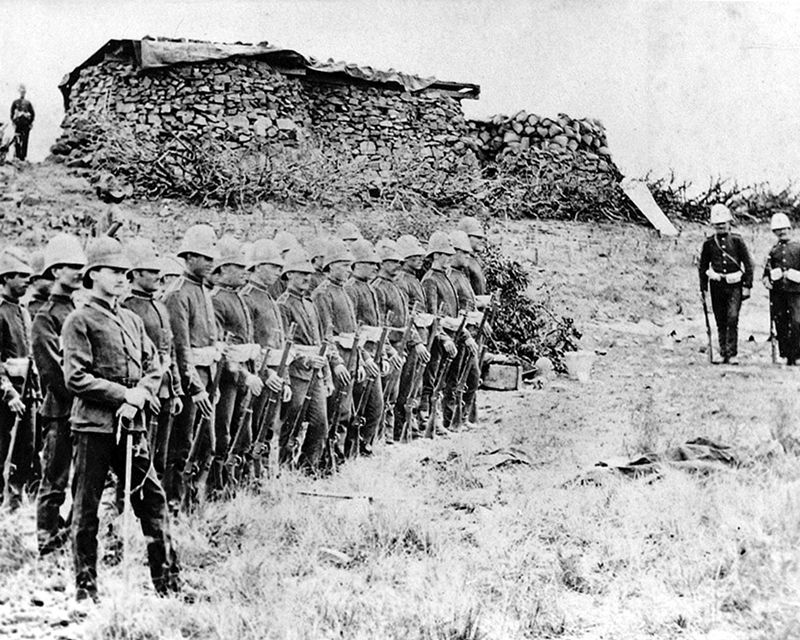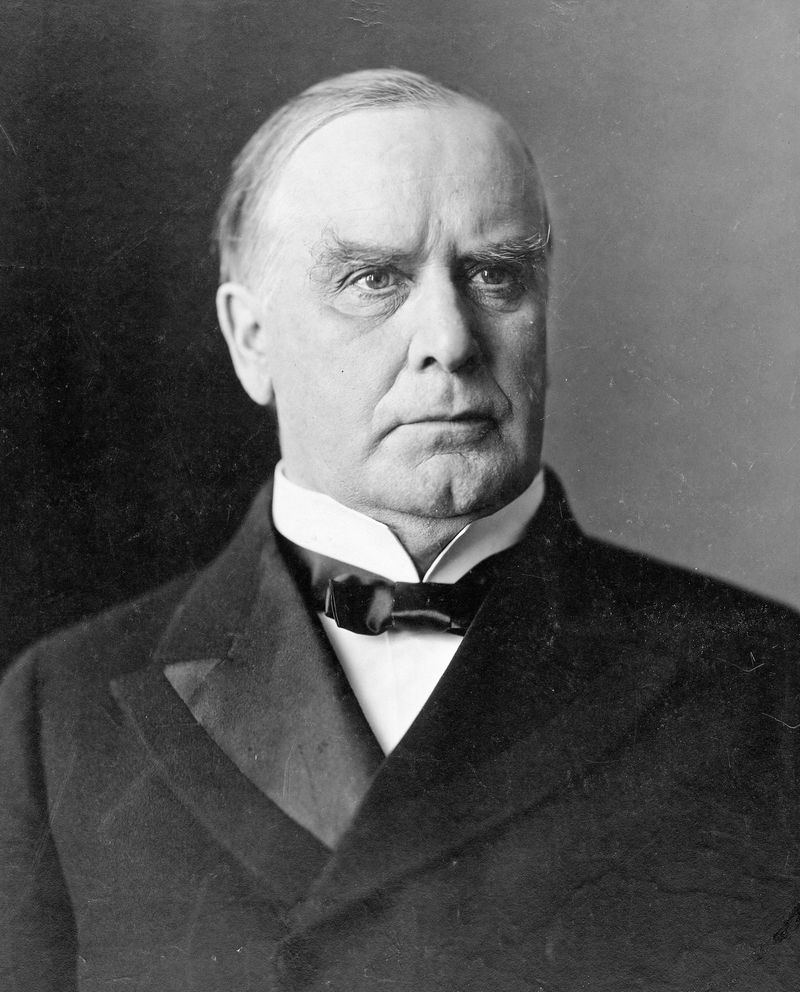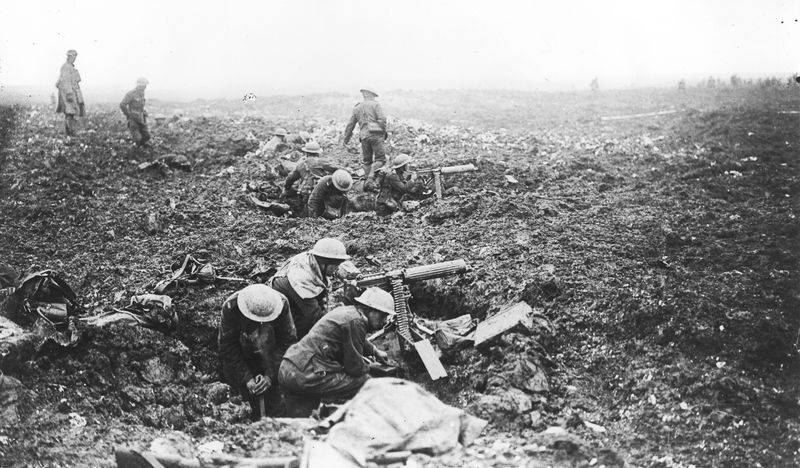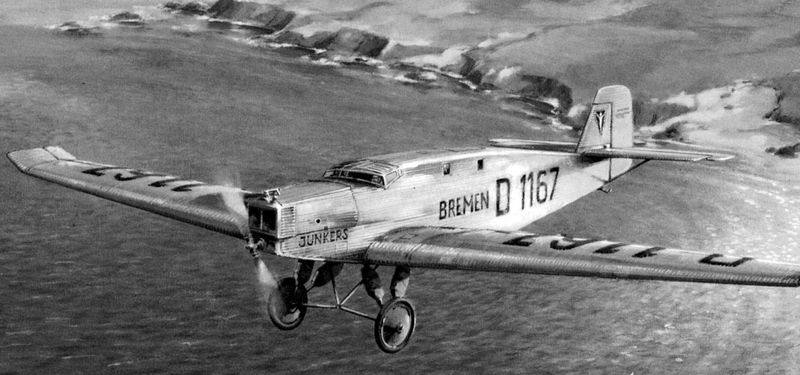April 12th holds a tapestry of events that have shaped history across various domains, from political upheavals to significant battles and innovations.
This date is a testament to the diverse and transformative moments that have unfolded through time, offering a glimpse into the past’s influence on the present and future.
1. 240 – Shapur I Becomes Co-Emperor of the Sasanian Empire
Shapur I, with a commanding presence, ascended to the role of Co-Emperor of the Sasanian Empire in 240. His reign marked a period of consolidation and expansion, setting a robust foundation for future achievements. Imagine the opulence of the Persian court, with intricate designs and courtly gatherings.
Under his leadership, the empire witnessed numerous victories against the Romans, enhancing its territorial holdings. His vision and strategies have left an indelible mark on Persian history.
Known for his architectural ventures, he contributed significantly to cultural advancements, echoing his influence even today.
2. 467 – Anthemius Elevated to Emperor of the Western Roman Empire
In 467, Anthemius’s rise to power as Emperor of the Western Roman Empire brought hope to a realm beset by challenges. His ascent was a strategic move to counter the encroaching threats from barbarian tribes.
Visualize the grandeur and political intrigue of Rome during his coronation, as alliances were forged and power dynamics shifted. Despite his efforts, internal strife and external pressures eventually led to his downfall.
His legacy remains a poignant reminder of the complexities of Roman governance and the relentless march of history.
3. 627 – King Edwin of Northumbria Is Converted to Christianity
King Edwin’s conversion to Christianity in 627 was a pivotal moment for Northumbria and the spread of Christianity across England. His baptism, amidst a backdrop of spiritual fervor, symbolized a new era of religious transformation.
Picture the modest yet profound ceremony, with chants echoing through the air, signifying a departure from pagan traditions. This conversion not only strengthened alliances but also paved the way for cultural and political shifts.
Edwin’s decision played a crucial role in shaping the religious landscape of medieval England.
4. 1012 – Duke Oldřich of Bohemia Deposes and Blinds His Brother Jaromír
In a dramatic turn of events in 1012, Duke Oldřich of Bohemia deposed his brother Jaromír, marking a significant power shift. The act of blinding Jaromír was a stark reminder of the brutal politics of the time.
Envision the tense atmosphere within the Bohemian court, where treachery and ambition ruled. This upheaval not only altered the course of Bohemian history but also highlighted the volatile nature of medieval European politics.
Oldřich’s actions were driven by a desire for dominance, leaving a legacy of ruthlessness and ambition.
5. 1204 – Crusaders of the Fourth Crusade Breach the Walls of Constantinople
The Fourth Crusade’s breach of Constantinople in 1204 was a monumental event that reshaped the Byzantine Empire’s fate. Envision the clamor and chaos as crusaders stormed the walls, an emblem of both victory and devastation.
This conquest, intended to bolster the Crusader states, instead led to a rift between Eastern and Western Christianity. The sheer scale of looting and destruction left an indelible scar on the city.
This moment of triumph and tragedy exemplifies the complexities and unintended consequences of crusading zeal.
6. 1606 – Adoption of the Union Flag for English and Scottish Ships
In 1606, the Union Flag was adopted for English and Scottish ships, symbolizing a burgeoning unity between the two nations. This flag, a blend of St. George’s and St. Andrew’s crosses, represented a step towards a united maritime identity.
Visualize the flag unfurling against the wind, a beacon of shared ambitions on the high seas. This emblem of unity foreshadowed future political alignments, highlighting the intertwined destinies of England and Scotland.
The flag remains a potent symbol of maritime heritage and national pride.
7. 1776 – Halifax Resolves Empower North Carolina’s Delegation to Vote for Independence
April 12, 1776, saw the Halifax Resolves empower North Carolina’s delegation to vote for independence from Britain. This bold move, within a colonial assembly, signified a pivotal stride towards American independence.
Picture the earnest faces of the delegates, quills poised over parchment, as they charted a new course. Their courage and resolve resonated beyond North Carolina, influencing other colonies.
This historical resolution marked a significant step in the journey towards the birth of a nation, echoing the spirit of revolution.
8. 1782 – Battle of the Saintes: Admiral Rodney Defeats the French Fleet
The Battle of the Saintes in 1782 was a defining naval engagement where Admiral Rodney’s strategic acumen led to a decisive British victory over the French fleet. Imagine the roar of cannon fire and the strategic maneuvers amidst ocean waves.
Rodney’s innovative tactics, especially breaking the line, shifted the tide in Britain’s favor, securing its maritime supremacy.
This victory not only disrupted French plans but also bolstered British morale. The battle is celebrated as a masterstroke in naval warfare, showcasing strategic brilliance.
9. 1796 – Napoleon Bonaparte Secures His First Victory at the Battle of Montenotte
Napoleon Bonaparte’s first victory at the Battle of Montenotte in 1796 marked the dawn of his military genius. At just 26, his leadership and strategic prowess shone brightly, setting the stage for his illustrious career.
Visualize the young general, confidently orchestrating his troops amidst the rugged Italian terrain. This triumph not only cemented his reputation but also shifted the dynamics of the Italian campaign.
It was a harbinger of the transformative impact he would have on Europe, heralding an era of Napoleonic dominance.
10. 1807 – The Froberg Mutiny on Malta Ends with the Destruction of Fort Ricasoli’s Magazine
The dramatic end of the Froberg Mutiny on Malta in 1807 was marked by the destruction of Fort Ricasoli’s magazine. The explosion was a cataclysmic culmination of a rebellion driven by grievances and desperation.
Imagine the tension and chaos as mutinous forces, seeking redress, clashed with authority. The blast not only quelled the rebellion but also underscored the volatility of military life.
This event highlighted the fragile balance of power on Malta, leaving a legacy of caution and reform.
11. 1820 – Alexander Ypsilantis Declared Leader of Filiki Eteria
In 1820, Alexander Ypsilantis’s declaration as leader of Filiki Eteria ignited the flames of Greek independence. Picture his charismatic presence as he rallied compatriots for the cause of liberation.
His leadership symbolized hope and defiance against Ottoman rule. The clandestine organization thrived on revolutionary zeal, envisioning a free Greece.
Ypsilantis’s role was pivotal in orchestrating the groundwork for the Greek War of Independence, leaving an enduring legacy of courage and nationalism.
12. 1831 – Broughton Suspension Bridge in Manchester Collapses
The sudden collapse of the Broughton Suspension Bridge in 1831 was a stark reminder of the challenges of engineering during the Industrial Revolution. Visualize the scene as onlookers gathered, shocked by the unexpected failure.
This incident highlighted the need for rigorous safety standards and engineering oversight. Despite the tragedy, it spurred advancements in bridge design and construction, influencing future infrastructure projects.
The collapse served as a catalyst for innovation, emphasizing the importance of learning from failure.
13. 1861 – Battle of Fort Sumter: The American Civil War Begins
The Battle of Fort Sumter in 1861 marked the onset of the American Civil War, a defining moment in U.S. history. Picture the tension as Confederate forces unleashed the first shots, heralding years of conflict.
Fort Sumter, sitting in the Charleston harbor, became a symbol of division and determination. The battle sparked a brutal war that would reshape the nation’s fabric.
This moment of ignition underscored the deep-seated issues that led to war, leaving a legacy of reconciliation and remembrance.
14. 1862 – The Andrews Raid (Great Locomotive Chase) Occurs in Georgia
The Andrews Raid of 1862, also known as the Great Locomotive Chase, was a daring Union raid during the American Civil War. Envision a steam locomotive barreling through the Georgian landscape, pursued by Confederate forces.
This high-stakes chase aimed to disrupt Confederate supply lines, showcasing ingenuity and bravery. Despite its ultimate failure, the raid became legendary for its audacity and adventure.
It highlighted the strategic importance of railroads and left a lasting impression on military tactics and folklore.
15. 1864 – Battle of Fort Pillow: Confederate Forces Massacre Surrendering African American Soldiers
The 1864 Battle of Fort Pillow is infamous for the massacre of African American soldiers by Confederate forces. Imagine the harrowing scene as the fort fell, and the horror unfolded.
This atrocity underscored the brutal realities and racial tensions of the American Civil War. The massacre galvanized Union resolve and highlighted the valor of African American troops.
Fort Pillow remains a poignant reminder of the war’s darker aspects and the enduring fight for justice and equality.
16. 1865 – Mobile, Alabama Falls to the Union Army
In 1865, the fall of Mobile, Alabama, to Union forces marked a significant Union victory in the closing days of the Civil War. Picture the scene as Union troops marched into the city, signaling the Confederate defeat.
This strategic victory further tightened the noose on the Confederacy, hastening the war’s end. The capture of Mobile showcased Union determination and military prowess.
It was a decisive moment in the final chapter of the Civil War, paving the way for reunification and reconstruction.
17. 1877 – The United Kingdom Annexes the Transvaal
The annexation of the Transvaal by the United Kingdom in 1877 was a pivotal moment in South African history. Imagine the formal ceremony as British officials asserted control, with local Boers looking on.
This annexation was driven by strategic interests and tensions with the Boer population. The move sparked resistance and set the stage for future conflicts, including the Boer Wars.
It highlighted the complexities of colonial expansion and the enduring struggle for autonomy and identity.
18. 1900 – President McKinley Signs the Foraker Act, Granting Puerto Rico Limited Self-Rule
In 1900, President McKinley signed the Foraker Act, ushering in limited self-rule for Puerto Rico. Picture the President, surrounded by eager Puerto Rican leaders, as this momentous legislation was enacted.
The act marked a new chapter for Puerto Rico, balancing autonomy and American oversight. It laid the groundwork for future political developments and debates on Puerto Rican sovereignty.
This legislative milestone underscored the complexities of colonial governance and the quest for self-determination.
19. 1917 – Canadian Forces Capture Vimy Ridge in World War I
The capture of Vimy Ridge by Canadian forces in 1917 was a defining moment in World War I. Visualize the courage and determination of Canadian soldiers as they stormed the ridge, overcoming daunting odds.
This victory was not just a military triumph but a seminal moment in Canadian national identity. The meticulous planning and execution showcased Canada’s growing prowess on the international stage.
Vimy Ridge remains a symbol of sacrifice and unity, celebrated as a cornerstone of Canadian history.
20. 1928 – The Bremen Makes the First Successful Transatlantic Flight from East to West
The Bremen’s successful transatlantic flight in 1928 marked a milestone in aviation history. Picture this pioneering aircraft soaring over the vast Atlantic, embodying the spirit of exploration and innovation.
This daring journey from East to West showcased human ingenuity and determination, setting new standards for aviation.
The Bremen’s flight paved the way for future transatlantic travel, highlighting the potential of air connectivity. It was a testament to the relentless pursuit of progress and the boundless possibilities of flight.
